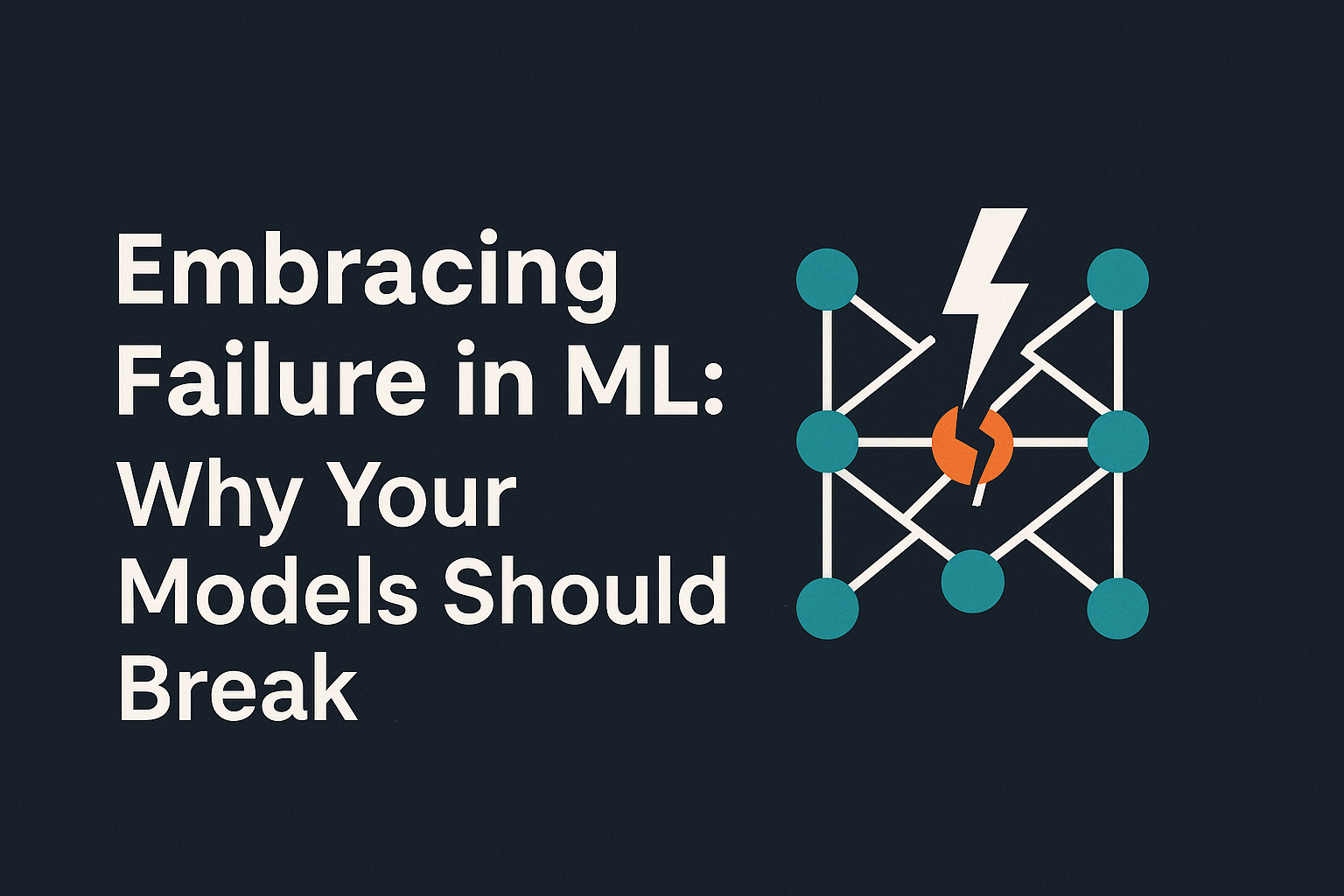In the world of machine learning (ML), failure is not just inevitable—it’s essential. Every time a model breaks, it gives you valuable data about its limits, your assumptions, and the nature of the problem itself. Yet many developers still treat model failure as something to avoid. The truth is, your models should break—because that’s how you make them better.
If you’re just beginning your AI journey, check out ChatGPT for Beginners: 7 Easy Ways to Boost Productivity with AI for a simple introduction to AI experimentation.
1. Why Model Failure Is a Feature, Not a Bug
Think of your ML model as a curious student, not a flawless machine. When it misclassifies an image or produces a biased prediction, it’s not failing—it’s learning.
Failures reveal blind spots in your dataset, model architecture, or evaluation metrics. They are diagnostic signals, not design flaws.
For instance, Retrieval-Augmented Generation (RAG) systems often start with irrelevant answers. But every failed response points to gaps in the retrieval or vector database—critical insights for future refinement.
2. Controlled Failure Drives Innovation
In ML research, controlled failure is how breakthroughs happen. By intentionally pushing your models to edge cases or noisy datasets, you uncover limitations that guide smarter solutions.
This principle powers advancements like zero-shot learning and few-shot generalization, explored in Zero-Shot vs Few-Shot: Real-World Performance Benchmarks for LLMs.
Instead of fearing failure, structure it:
- Run stress tests with unseen data.
- Log and analyze mispredictions.
- Regularly retrain with “failure samples.”
These small, data-driven feedback loops turn broken systems into adaptive learners.
3. The Psychology of Failure in ML Teams
Beyond algorithms, mindset matters. Teams that embrace failure move faster, innovate deeper, and iterate smarter.
This is similar to adopting a growth mindset, as covered in The Growth Mindset Approach to Learning Machine Learning.
Instead of asking, “Why did this model fail?”—ask “What did this failure teach us?”
That reframing transforms debugging into discovery.
4. Practical Strategies to Leverage Failure
Here’s how to make model failures a cornerstone of your ML workflow:
- Create a “failure log.” Document where and why predictions go wrong.
- Use interpretability tools. Visualize model attention to see what features drive bad decisions.
- Simulate failure intentionally. Perturb inputs, add noise, or test adversarial examples.
- Benchmark regularly. Compare against baselines—especially when deploying updates.
For more technical implementation ideas, see How to Build a Document Q&A System with RAG — a great example of iterating toward reliability through testing and retraining.
5. Breaking Models, Building Confidence
A model that never fails is either under-tested or overfitted.
Letting your models break in safe, measurable ways builds robustness and trust. The result? Systems that perform better in unpredictable, real-world environments.
If you’re looking to explore and experiment safely, start with these Top 5 Free AI Tools You Can Start Using Today. They’re perfect for quick ML trials without heavy setup.
Conclusion: Fail Forward, Learn Faster
Embracing model failure is the heart of scientific progress in machine learning.
When you allow your models to fail, you learn faster, innovate deeper, and build systems that truly adapt.
The next time your model breaks—celebrate it. You’ve just found your next breakthrough.
For more on developing an experimental AI mindset, explore Unlock Your AI Potential: Say Goodbye to Imposter Syndrome and How to Improve Your AI with Retrieval-Augmented Generation.



